The American Rocket Society (ARS) began its existence on 4 April 1930, under the name of the American Interplanetary Society. It was founded by science fiction writers G. Edward Pendray, David Lasser, Laurence Manning, Nathan Schachner, and others. Pendray corresponded with Willy Ley of the German rocket society, Verein für Raumschiffahrt, and visited him in 1931. The members originally conducted their own rocket experiments in New York and New Jersey. The society printed its own journal. The AIS did pioneering work in testing the design requirements of liquid-fueled rockets, with a number of successful test launches of ARS rockets occurring in this period and pointing the way to the United States space program. Its name was changed to American Rocket Society on 6 April 1934. In 1936, the American Rocket Society and its member Alfred Africano were awarded the Prix d'Astronautique by the Société astronomique de France in recognition of their pioneering tests with liquid fueled rockets.

The American Institute of Aeronautics and Astronautics (AIAA) is a professional society for the field of aerospace engineering. The AIAA is the U.S. representative on the International Astronautical Federation and the International Council of the Aeronautical Sciences. In 2015, it had more than 30,000 members among aerospace professionals worldwide.

Walter P. Kistler was a physicist, inventor, and philanthropist, born in Biel, Switzerland. Kistler was a life member of the Swiss Physical Society and a member of AIAA and ISA, which presented him the Life Achievement Award in 2000. He held patents on more than 50 inventions in the scientific and industrial instrumentation fields, and had published a number of papers in scientific and trade journals. He was a major donor to a eugenics research organization, the Pioneer Fund.
Michimasa Fujino is a retired Japanese aeronautical engineer, entrepreneur, and founder of the Honda Aircraft Company, a subsidiary of the Honda Motor Company. Fujino worked as chief engineer within Honda R&D, then as vice president, before he was named the project leader for HondaJet development. He was also a Honda Motor managing officer. At Honda Aircraft, he played a crucial role in the growth of the company, and was responsible for the overall strategy of its design, development, certification, marketing, sales, and production of the HondaJet.
Jan Roskam was the Deane E. Ackers Distinguished Professor of Aerospace Engineering at the University of Kansas. He is the author of eleven books on airplane design and flight dynamics and over 160 papers on the topics of aircraft aerodynamics, performance, design and flight controls. He founded the company DARcorporation with Willem Anemaat.
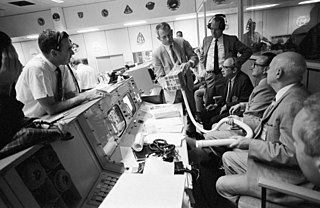
Aerospace engineering is the primary field of engineering concerned with the development of aircraft and spacecraft. It has two major and overlapping branches: aeronautical engineering and astronautical engineering. Avionics engineering is similar, but deals with the electronics side of aerospace engineering.
Boris Laschka is a German fluid dynamics scientist and aeronautical engineer known for his work in unsteady aerodynamics, in applied aerodynamics, in aeroelasticity, and by his participation in the development of several experimental, civil, and military airplanes, e.g. VTOL VJ 101, Airbus A300 and A310, CN 235 and N 250 (Indonesia) and Tornado aircraft.
Value-driven design (VDD) is a systems engineering strategy based on microeconomics which enables multidisciplinary design optimization. Value-driven design is being developed by the American Institute of Aeronautics and Astronautics, through a program committee of government, industry and academic representatives. In parallel, the U.S. Defense Advanced Research Projects Agency has promulgated an identical strategy, calling it value-centric design, on the F6 Program. At this point, the terms value-driven design and value-centric design are interchangeable. The essence of these strategies is that design choices are made to maximize system value rather than to meet performance requirements.


Robert David Braun is an American aerospace engineer and academic. He has served as the dean of the College of Engineering and Applied Science at the University of Colorado Boulder, the David and Andrew Lewis Professor of Space Technology at the Georgia Institute of Technology, and the NASA Chief Technologist. Currently, Dr. Braun is the Space Sector Head at the Johns Hopkins University Applied Physics Laboratory (APL).
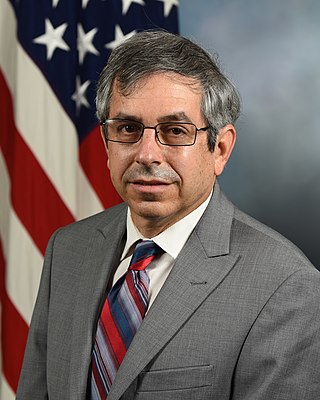
Dr. Mark J. Lewis is a senior American aerospace and defense executive with special expertise in hypersonics. He is currently the Executive Director of the National Defense Industrial Association's Emerging Technologies Institute, following his role in the second half of 2020 as the acting US Deputy Under Secretary of Defense for Research and Engineering, and before that the Director of Defense Research and Engineering for Modernization. He was the Chief Scientist of the U.S. Air Force, Washington, D.C. from 2004 to 2008 and was the longest-serving Chief Scientist in Air Force history. He served as chief scientific adviser to the Chief of Staff and Secretary of the Air Force, and provided assessments on a wide range of scientific and technical issues affecting the Air Force mission. In this role he identified and analyzed technical issues and brought them to attention of Air Force leaders, and interacted with other Air Staff principals, operational commanders, combatant commands, acquisition, and science & technology communities to address cross-organizational technical issues and solutions. His primary areas of focus included energy, sustainment, long-range strike technologies, advanced propulsion systems, and workforce development.
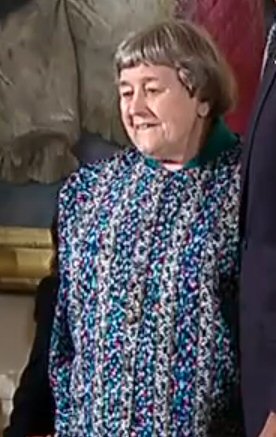
Yvonne Madelaine Brill was a Canadian American rocket and jet propulsion engineer. She is responsible for inventing the Electrothermal Hydrazine Thruster (EHT/Resistojet), a fuel-efficient rocket thruster that keeps today’s satellites in orbit, and holds a patent for its invention. During her career she was involved in a broad range of national space programs in the United States, including NASA and the International Maritime Satellite Organization.
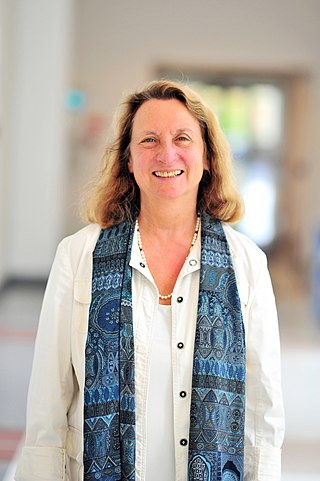
Elaine Surick Oran is an American physical scientist and is considered a world authority on numerical methods for large-scale simulation of physical systems. She has pioneered computational technology to solve complex reactive flow problems, unifying concepts from science, mathematics, engineering, and computer science in a new methodology. An incredibly diverse range of phenomena can be modeled and better understood using her techniques for numerical simulation of fluid flows, ranging from the tightly grouped movements of fish in Earth's oceans to the explosions of far-flung supernovae in space. Her work has contributed significantly to the advancement of the engineering profession.
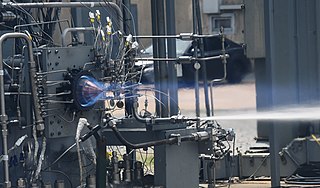
A rotating detonation engine (RDE) is an engine using a form of pressure gain combustion, where one or more detonations continuously travel around an annular channel. Computational simulations and experimental results have shown that the RDE has potential in transport and other applications.
Gadicharla V.R. Rao , D.Sc. was an American aerospace engineer of Indian origin who worked in the jet engine and rocket propulsion fields. Rao worked for General Electric in their Gas Turbine Division department and was a research scientist at Marquardt Aircraft, before working for Rocketdyne, where he designed the optimum thrust nozzle. Often referred to as the "Rao's nozzle", it is part of the standard design for rocket engines. The Rao Nozzle is used currently in rocket, missile, and satellite control systems worldwide. It is taught in universities that offer Aerospace Engineering, including Massachusetts Institute of Technology (MIT), California Institute of Technology (Caltech), and Georgia Institute of Technology.
The Journal of Propulsion and Power is a bimonthly peer-reviewed scientific journal covering research on aerospace propulsion and power. The editor-in-chief is Joseph M. Powers. It is published by the American Institute of Aeronautics and Astronautics and was established in 1985.
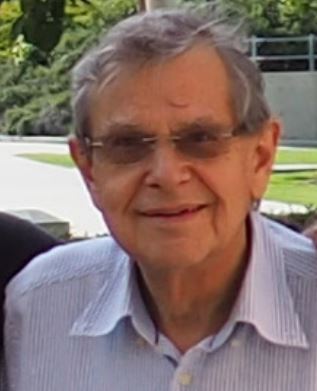
Forman Arthur Williams is an American academic in the field of combustion and aerospace engineering who is Emeritus Professor of Mechanical and Aerospace Engineering at the University of California San Diego.

Joseph Majdalani is an Lebanese-American professor of Mechanical and Aerospace Engineering. He began his career at Marquette University, before serving as both the Jack D. Whitfield Professor of High Speed Flows and Arnold Chair of Excellence at the University of Tennessee Space Institute. He then served as the Auburn Alumni Engineering Council Endowed Professor and Chair, and is currently the Hugh and Loeda Francis Chair of Excellence in Aerospace Engineering at Auburn University.

Robert E. "Rob" Meyerson is an American aerospace engineer and executive known for his role in the development of reusable rocket launch systems.

Ashwani K. Gupta is a British-American engineer and educator with research focus on combustion, fuels, fuel reforming, advanced diagnostics, High Temperature Air Combustion, and high-intensity distributed combustion, green combustion turbine, micro-combustion, and air pollution. He is an Distinguished University Professor at the University of Maryland. Gupta is also Professor of Mechanical Engineering at the University of Maryland and Director of Combustion Laboratory. He is also an Affiliate Professor at Institute of Physical Science and Technology, University of Maryland which is part of the University of Maryland College of Computer, Mathematical and Natural Sciences.













